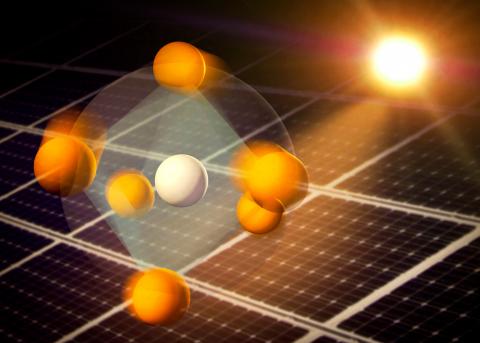Researchers at the Department of Energy's SLAC National Accelerator Laboratory have used a powerful "electron camera" to establish that light whirls atoms around in perovskites, potentially explaining the high efficiency of perovskite-based solar cell materials and providing clues for making better ones.

The scientists recorded movies that show that certain atoms in a perovskite respond to light within trillionths of a second in a very unusual manner. They explain that this may facilitate the transport of electric charges through the material and boost its efficiency.
At SLAC's Accelerator Structure Test Area (ASTA), the researchers first hit a perovskite film, less than two millionths of an inch thick, with a 40-femtosecond laser pulse. To determine the atomic response, they sent a 300-femtosecond pulse of highly energetic electrons through the material and observed how the electrons were deflected in the film. This technique, called ultrafast electron diffraction (UED), allowed them to reconstruct the atomic structure.
'By repeating the experiment with different time delays between the two pulses, we obtained a stop-motion movie of the lead and iodine atoms' motions after the light hit,' said SLAC's lead scientist for UED. 'The method is similar to taking a series of ultrafast X-ray snapshots, but electrons give us much stronger signals for thin samples and are less destructive.'
The team expected that the light pulse would affect atoms evenly in all directions, causing them to jiggle around their original positions. 'But that's not what happened,' the researchers said. 'Within 10 trillionths of a second after the laser pulse, the iodine atoms rotated around each lead atom as if they were moving on the surface of a sphere with the lead atom at the center, switching each octahedron from a regular shape to a distorted one.'
The surprising deformations were long-lived and unexpectedly large, similar in size to those observed in melting crystals. 'This motion could alter the way charges move'. 'This response to light could enhance efficiency, for instance by allowing electric charges to migrate through defects and protecting them from being trapped in the material.'

